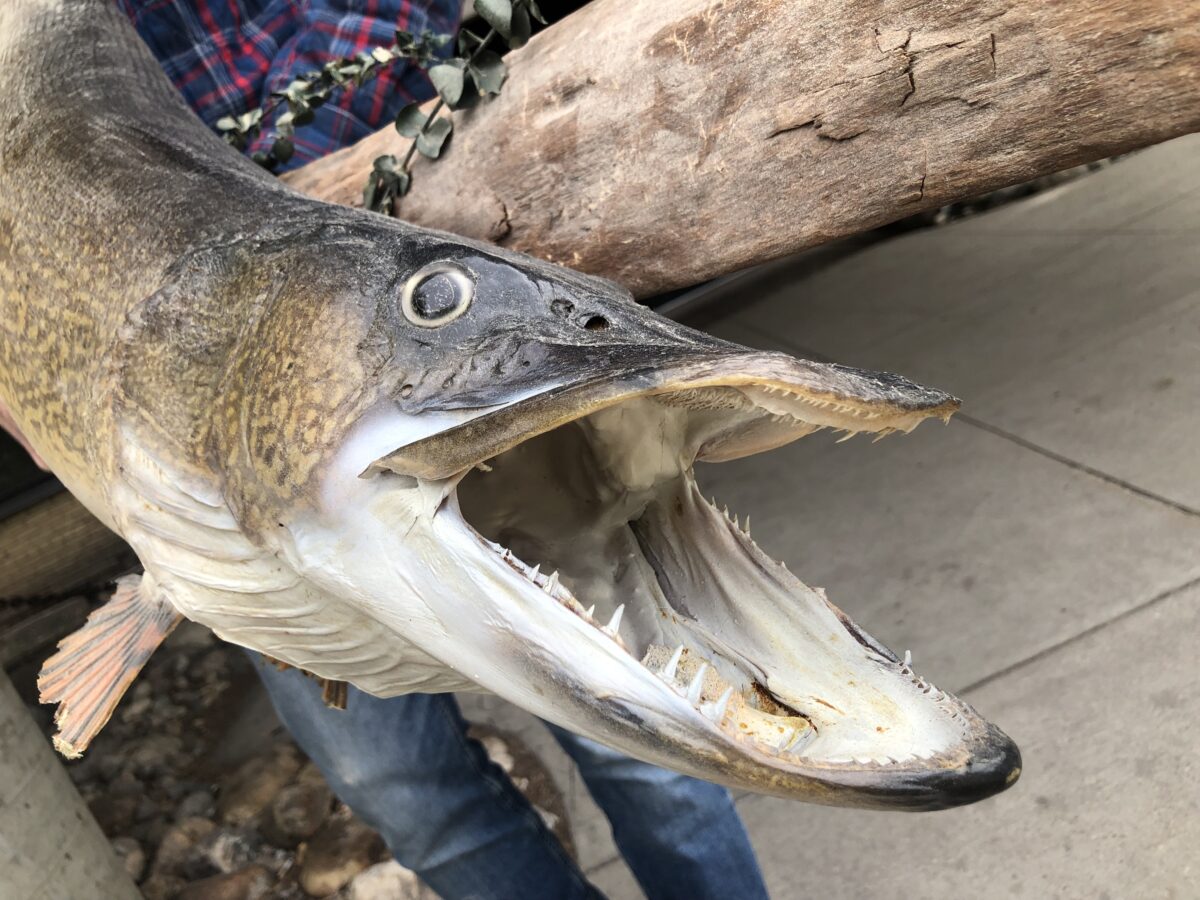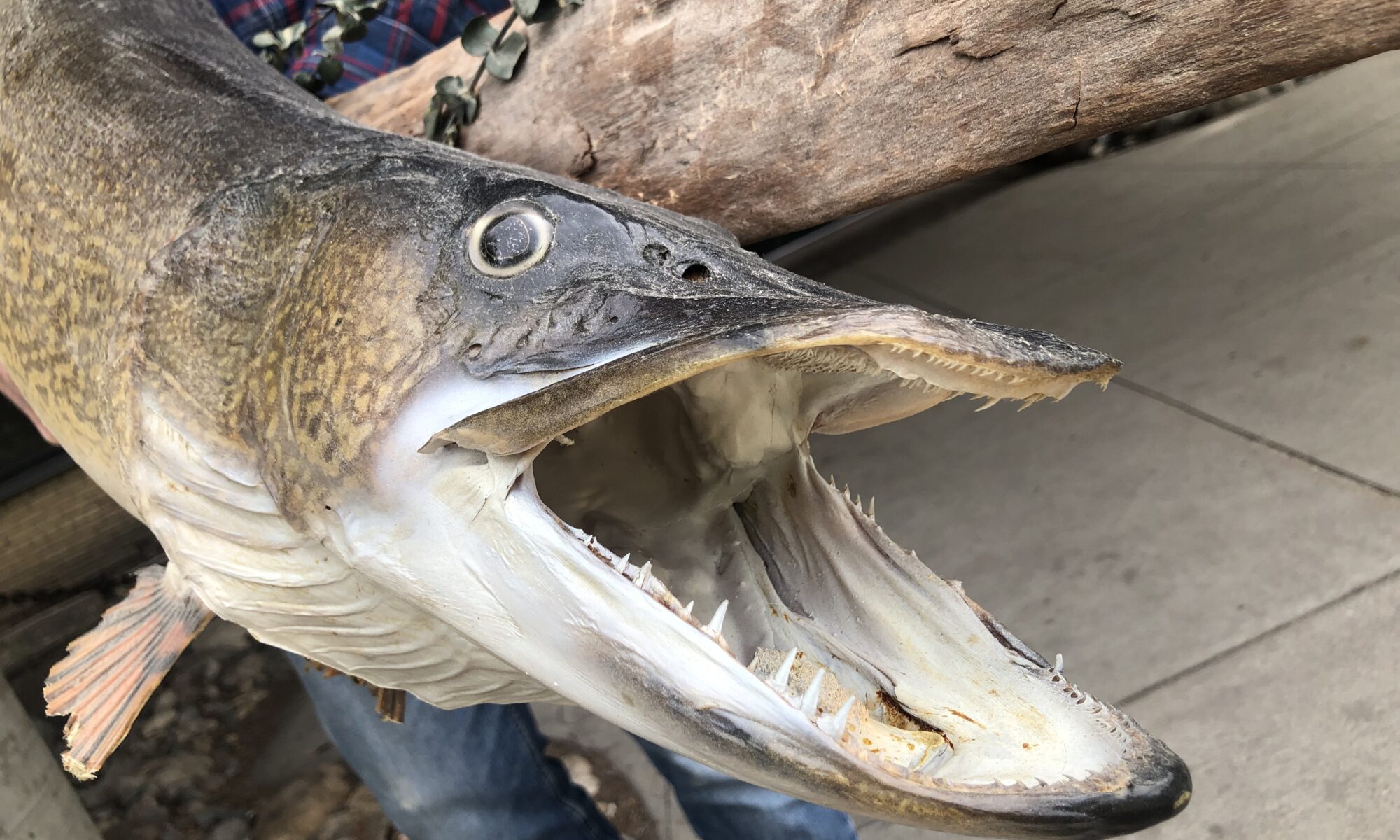
The Big Fish
After the long winter in extreme northern Minnesota where I grew up, Spring brought a whole new frame of mind. The snow melted, the puddles slowly dried up, the grass sprouted and turned green, and the weather grew balmy and sometimes hot. The big event occurred late in the Spring, in the month of May . . . the fishing opener.
I can remember years as a boy, when the opener turned the little town of a hundred or so, into a huge mass of people. Over 2000 cars, with boats and campers, invaded our little paradise and turned the solitude into a bustling small city. All of the resorts and public accesses were full. People began parking on the side of the gravel road, heading north out of the town. That line of cars extended as much as a half mile up the road.
Waskish resides on the far eastern shore of Red Lake, Minnesota’s largest lake . . . and the lake is a walleye factory.
For many years it was a given that one could catch his limit of six walleyes in a half hour. Only during the hot months of summer did the fishing get slow.
Then in the late 90’s, the unthinkable happened. The lake got fished out. Netting on the Native American side, the other side of the lake, got out of hand. A poacher was apprehended who had netted 90,000 pounds of walleyes, to be sold in big cities like Chicago.
The netting, combined with recreational fishing on the east side, depleted the lake of the walleyes to the point that in the year 2000, the DNR closed fishing season for several years.
The story I am about to tell you took place around 1997, when the decline was already happening, and we didn’t really know why. That year, it was rare to go out and catch walleyes. When they were biting, the word usually spread like wildfire.
So one Sunday, several weeks into the fishing season, my family and I were getting ready to leave Waskish and travel back to our home in Minneapolis. We usually left early for the five-hour drive, to arrive home about 7 p.m. That way we could somewhat recover and be ready for work on Monday morning.
Dad followed us to my sister and brother-in-law’s house, where we stopped briefly to say good-bye. While we were standing in the living room, suddenly two of their son-in-laws burst through the door.
“The walleyes are biting!” was the excited announcement. They had caught several.
Dad and I looked at each other, reading each other’s thoughts. “Should we go fishing?”
It was decided that we could go for an hour. Then we would still be able to reach home at a half decent hour.
Dad and I rushed back to his place and feverishly threw our equipment into the car. Then we dashed to the river, where Dad’s boat was docked. Soon we were trolling in a wide arch out from the mouth of the Tamarac River. It was overcast, coolish and a few drops of rain had begun to fall.
I had rigged my walleye outfit with a large hook, a chub minnow and my favorite personal addition, a florescent, lime green twister tail. The experts were saying that to catch walleyes, you should have a small hook. We natives tended not to pay much attention to the experts. What did they know?
My cousin David said he used a large hook, attaching the small minnow by the mouth. Because the walleyes of Red Lake averaged about a pound at that time, they usually didn’t swallow the hook, and the large hook worked really well, just hooking them in the mouth.
So here I was, trolling with a combination the experts would laugh at . . . a large hook, a chub minnow and a twister tail on the hook just above the minnow.
We hadn’t been trolling more than a few minutes when I got a snag. “Oh shoot,” I mumbled! If you couldn’t jerk a snag loose, you had to back the boat beyond the point of the snag in order to get loose. It was a frustrating interruption to one’s fishing routine, to say the least.
So, I gave my line a might yank . . . and the snag moved ever so slightly, about an inch. A snag doesn’t usually move. It could only mean one thing. I had hooked a big one!
The adrenaline shot through my body, and my breath began coming in short bursts.
“Dad, I’ve got a big one!”
Dad stopped and took in the whole situation in one glance. Then he just watched, ready for whatever might transpire.
I began reeling, and the drag began to slip. The drag is set to slip at a certain amount of pull on the line, thus keeping your line from breaking.
I had let out a lot of line while trolling. My bait was way back behind the boat somewhere.
Then the big fish surfaced, about forty yards behind the boat . . . and it was a monster.
“Dad . . . look!”
“Oh, my gosh!” was his measured response.
“Get the net!” I yelled.
Dad began looking around the boat for the net and discovered . . . there wasn’t one. In our haste to get going we had neglected to put the net in the boat.
I was reeling like crazy. I would make some headway in getting the big fish toward the boat, and then it would run, the drag on my reel screaming. Then I’d reel it in for a spell, and it would run again. This is typical northern behavior. This cat and mouse game has been known to go on for half an hour before the fish can be landed . . . if it doesn’t break your line and go free for another day.
Little by little, I was making progress. Finally, I got it up to the boat. Then it ran again.
Dad was looking around the boat, wondering if anything in it could help us land the fish.
Ah . . . we had brought rain gear. And it just so happened the rain gear came in a heavy plastic pouch. Dad quickly put the pouch on his hand like a glove.
“If you can get her up to the side,” he said. “I’ll slip my hand into her gills and maybe I can hoist her in.” A northern’s mouth is lined with razor sharp teeth and the gills are equally as sharp. A bare hand would quickly be shredded with numerous cuts, but the thick plastic pouch would protect Dad’s hand.
The northern ran two more times. Then on the next try, I was able to get her in to the side of the boat, mouth first. She was tiring by now, and she hesitated a few seconds. Dad was kneeling, ready. The old savvy fisherman slipped his hand into her left gill. With his other hand on his wrist for support, he gave a mighty heave. The fish came out of the water, over his head and into the center of the boat.
“Ahh! We got her!” he breathed in satisfaction, grinning at me from the bottom of the boat.
We had landed her. I was kind of in shock, just staring at the big fish. Ever since I was a small boy, it was my dream to catch a big northern . . . and there it was in the bottom of our boat.
Well, needless to say, we forgot about catching any walleyes. We were homeward bound with our big catch . . . and we did it all without a landing net.
Later, my kids gave me money to mount my northern. She measured 41 ¾ inches. The taxidermist said, “That’s a 25 pounder.” However, my northern had just spawned and she was skinny, weighing just 17 ½ pounds. The taxidermist added the extra bulk and made her the size of a healthy 25-pound fish.
There is one big lesson to this story.
Never give up on your dreams.
Never stop trying.
Never stop seeking.
If you keep hoping,
if you keep trying, chances are,
your dream will come to you.
Is God in your dreams? Was He watching when I caught the big northern on a rig the experts would have laughed at? Of course He was. I would guess He probably had a big belly laugh when we landed the fish with the aid of a plastic pouch from the rain gear.
God is into dreams.
Not only the unlikely ones, but the impossible ones. Remember that Jesus said, “All things are possible with God (Matthew 19:26),”
and carry that promise with you
throughout the pursuit of all of your dreams,
both the small ones and the very big ones.
After fishing season was closed in 2000, the DNR began managing the refurbishing of the lake. They restocked the lake with walleyes and when the population had built up, season was again opened. Today, Red Lake fising in Waskish is better than ever. On the 2025 opener, cars were again parked about a half mile up the gravel raod going north. The boat launch was backed up, and while they waited, many fished from the shore of the river. Many of them caught their limit from the river bank and never launched their boat.
The only difference in Waskish between the present time and the glory days of old is that now, the walleyes are bigger.
Photograph taken by Lorraine
